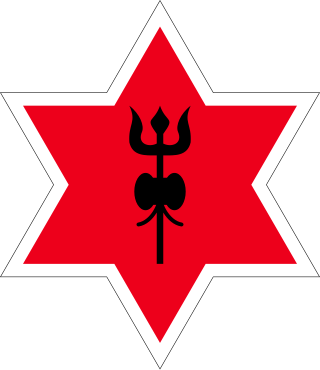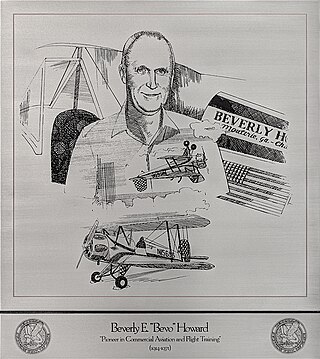
Piper Aircraft, Inc. is a manufacturer of general aviation aircraft, located at the Vero Beach Regional Airport in Vero Beach, Florida, United States and owned since 2009 by the Government of Brunei. Throughout much of the mid-to-late 20th century, it was considered to be one of the "Big Three" in the field of general aviation manufacturing, along with Beechcraft and Cessna.

The Piper J-3 Cub is an American light aircraft that was built between 1938 and 1947 by Piper Aircraft. The aircraft has a simple, lightweight design which gives it good low-speed handling properties and short-field performance. The Cub is Piper Aircraft's second most-produced model after the PA-28 Cherokee series with over 20,000 built in the United States. Its simplicity, affordability and popularity invokes comparisons to the Ford Model T automobile.

The Piper M-Class is a family of American light aircraft manufactured by Piper Aircraft of Vero Beach, Florida. The aircraft are powered by single engines and have six seats. Twentieth century production of the class was all piston engined, but turboprop versions called the M500, M600 and M700 (Fury) are now also available.

London Oxford Airport, formerly known as Kidlington Airport, is a privately owned airport located near Kidlington in Cherwell District, Oxfordshire, 6 NM northwest by north of Oxford, 62 mi (100 km) from Central London. Despite its name the airport is not included in the IATA code LON used for London airports.

Daytona Beach International Airport is a county-owned airport located three miles (5 km) southwest of Daytona Beach, next to Daytona International Speedway, in Volusia County, Florida, United States. The airport has 3 runways, a six-gate domestic terminal, and an international terminal. Daytona Beach is the headquarters of Embry-Riddle Aeronautical University.

The Nepali Army Air Service is the army aviation branch of the Nepalese Armed Forces, also known as the Nepal Army Air Wing. Nepal has no separate air force but the Nepali Army operates several aircraft within the army aviation branch.

Cincinnati Municipal Airport – Lunken Field is a public airport in Cincinnati, Ohio, 3 mi (4.8 km) east of Downtown Cincinnati. It is owned by the city of Cincinnati and serves private aircraft, including the fleets of local corporations. It serves a few commercial flights and is the second-largest airport serving Cincinnati after Cincinnati/Northern Kentucky International Airport, which is the area’s primary airport. It is known as Lunken Airport or Lunken Field, after Eshelby Lunken. It is bounded by US Route 50 to the west, US Route 52 and the Ohio River to the south, the Little Miami River to the east, and Ohio Route 125 to the north. The airport is headquarters and hub for Cincinnati-based public charter airline Ultimate Air Shuttle, serving 5 destinations in the eastern United States with 16 peak daily flights. Lunken is also home to small charter airline Flamingo Air and its aviation school.
Wolverhampton Halfpenny Green Airport, formerly Halfpenny Green Airport and Wolverhampton Business Airport, locally Bobbington Airport, is a small, 400-acre (1.6 km2) airport situated near the village of Bobbington, South Staffordshire. The airport is situated 8 mi (13 km) south-west of Wolverhampton, the city which it serves.

Beverly "Bevo" Howard was an American aerobatic pilot and aviation businessman.

One Six Right: The Romance of Flying is an independent documentary film about the general aviation industry as seen through a local airport. The film has garnered both local and national political attention in the United States as an accurate depiction of general aviation and its important contributions to all aviation industries worldwide. Within the entertainment industry, the film has attracted the sponsorship and support of many large media companies, including Apple, Sony Electronics, Toshiba, Technicolor, Bose, and Dolby, as pioneering new standards in high definition (HD) film making and distribution.

The Aeronca Model 7 Champion, commonly known as the "Champ", or "Airknocker", is a single-engine light airplane with a high wing, generally configured with fixed conventional landing gear and tandem seating for two occupants.

Beaver County Airport or is a county-owned public airport three miles northwest of Beaver Falls, in Beaver County, Pennsylvania.
Anderson Municipal Airport is a public use airport three miles east of Anderson in Madison County, Indiana. The National Plan of Integrated Airport Systems for 2011–2015 categorized it as a general aviation facility. The airport currently has no scheduled air service however, is one of the busiest general aviation airports in the State of Indiana given its high volume of flight training and charter traffic.

On August 8, 2009, at 11:53 a.m. (15:53 UTC), nine people died when a tour helicopter and a small private airplane collided over the Hudson River near Frank Sinatra Park in Hoboken, New Jersey, United States. The aircraft were in an area known as the "Hudson River VFR Corridor", which extends from the surface of the river to altitudes of 800 to 1,500 ft at various locations along the Hudson River in the immediate area of New York City. Within this corridor, aircraft operate under visual flight rules (VFR), under which the responsibility to see and avoid other air traffic rests with the individual pilots rather than with the air traffic controller (ATC).
For the airport near Cave Junction, Oregon, see Illinois Valley Airport
ATP Flight School is the largest flight training company in the United States. The curriculum focuses on airline-oriented pilot programs at locations across the country. ATP is the leading supplier of professionally trained pilots to the nation's regional airlines.

The CubCrafters CC19 XCub is an American light aircraft, designed and produced by Cub Crafters of Yakima, Washington, introduced in June 2016. The aircraft is supplied complete and ready-to-fly.
Clarence Gilbert Taylor was an early American aviation entrepreneur and co-founder of the Taylor Brothers Aircraft Corporation in Rochester, New York. He was the designer of the Taylor Cub, which led to the creation of the Piper Cub, one of the most popular airplanes in history.
Sparta Community Airport, also known as Hunter Field, is a civil, public use airport 2 miles north of Sparta in Randolph County, Illinois, United States. It is publicly owned by the Sparta Community Airport Authority.

Richard Gibson McSpadden was an American educator and pilot. He became the Aircraft Owners and Pilots Association (AOPA) Air Safety Institute (ASI) senior vice-president in 2020, having previously been its executive director from 2017.



















